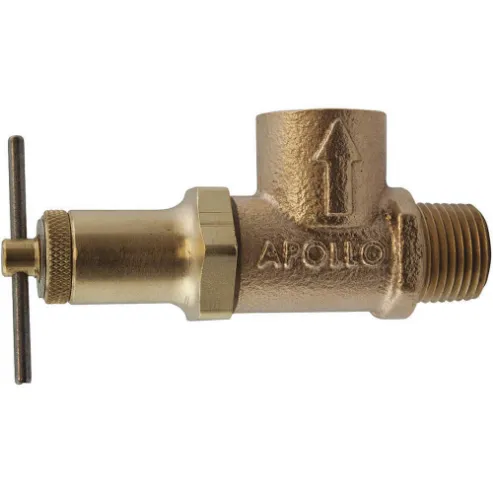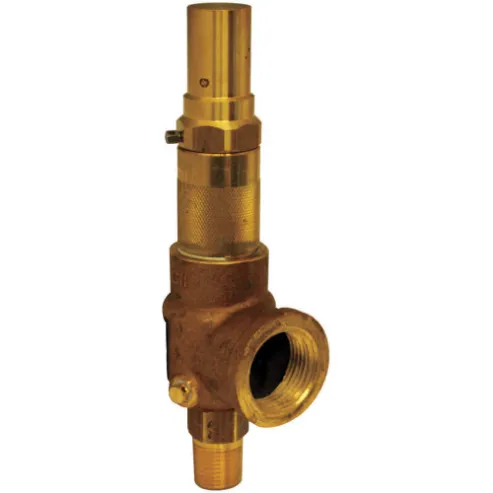Apollo 16-501-02 adjustable relief valve is ideal for safeguarding systems by releasing excess pressure, preventing potential rupture or explosion. This valve is used in the manufacturing, petrochemical, oil & gas and pharmaceutical industries. Its adjustable nature allows precise pressure setting, ensuring controlled operation.
Working Mechanism:
- When pressure within a system increases due to fluid expansion or other factors, the relief valve senses this buildup.
- The rising pressure exerts force on the nitrile disc situated within the valve.
- As the exerted force exceeds the seating force, the nitrile disc lifts off its seat, creating an open pathway.
- With the disc lifted, pressurised fluid flows through the open path, directed towards the valve's outlet.
- As fluid exits, the pressure within the system begins to decrease, allowing pressure to balance.
Features:
- This valve features bronze construction for enhanced durability & corrosion resistance.
- It has an MNPT inlet and an FNPT outlet for seamless integration into various setups.
- This valve has a disc composed of nitrile material, which enhances its sealing capabilities.
- It further features a nitrile seal for excellent chemical resistance & reliable sealing performance.
- This valve can operate at temperatures ranging from 0 to 200 degrees F.
- It has a spring inside valve made of stainless steel, ensuring durability and resistance to corrosion.
Frequently Asked Questions:
Q. How does the adjustable feature of this relief valve work?
A. The adjustable feature allows operators to set the pressure at which the valve will start releasing excess pressure. This customisation ensures precise pressure control based on system requirements.
Q. What is the operating pressure range of this valve?
A. The valve operates within a pressure range of 250 to 600 PSI.
Q. How to maintain this Apollo relief valve?
A.
- Conduct periodic visual inspections for damage, corrosion or leaks.
- Keep the area around the valve clean and debris-free.
- Verify the valve's pressure setting matches the system's requirements.
- Perform functional tests to ensure proper valve operation.
- Check the adjustment mechanism's smoothness and accuracy.
- Inspect nitrile components, seals and gaskets for wear or damage.
 Change Country
Change Country

